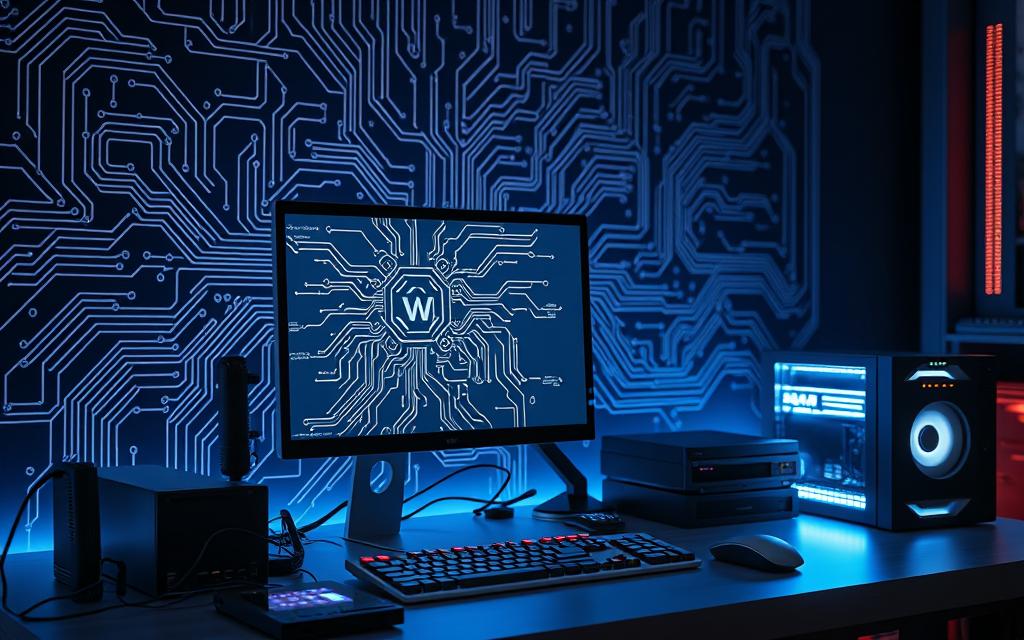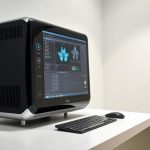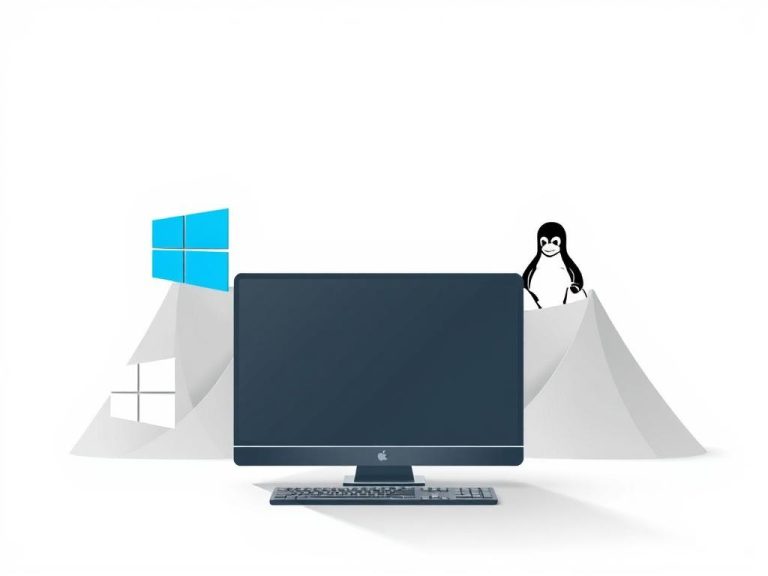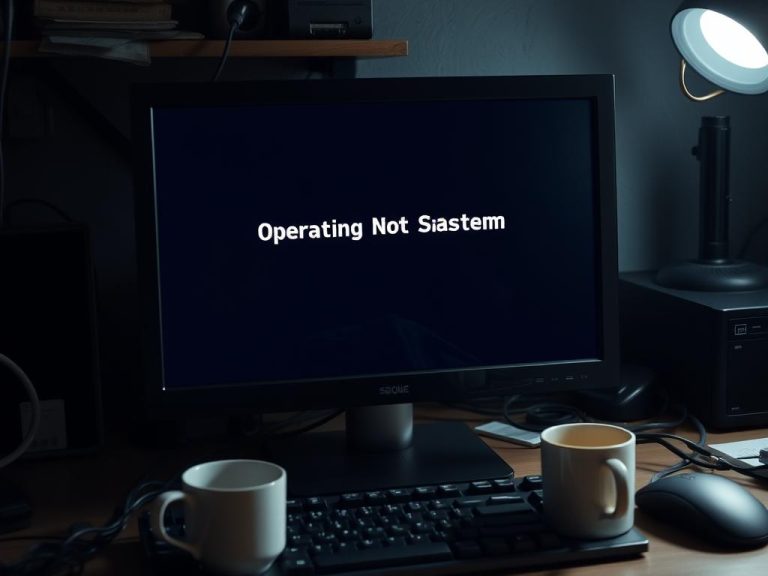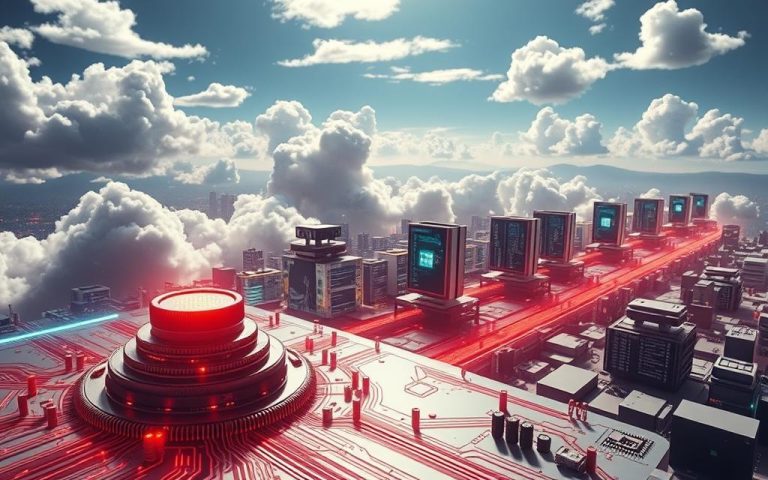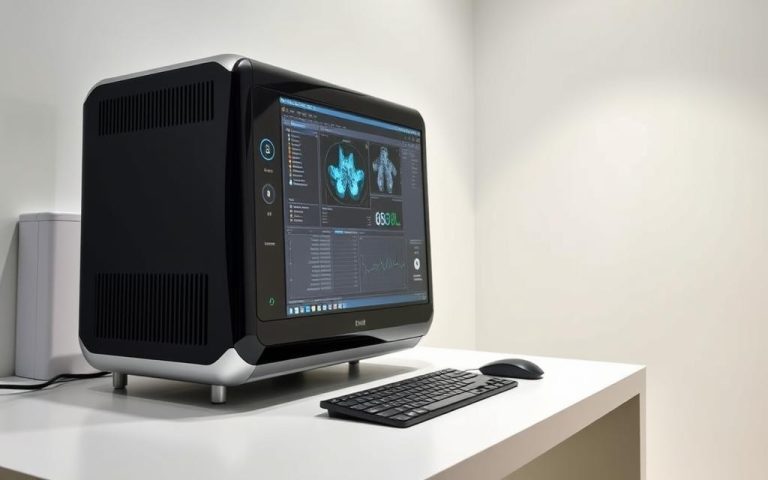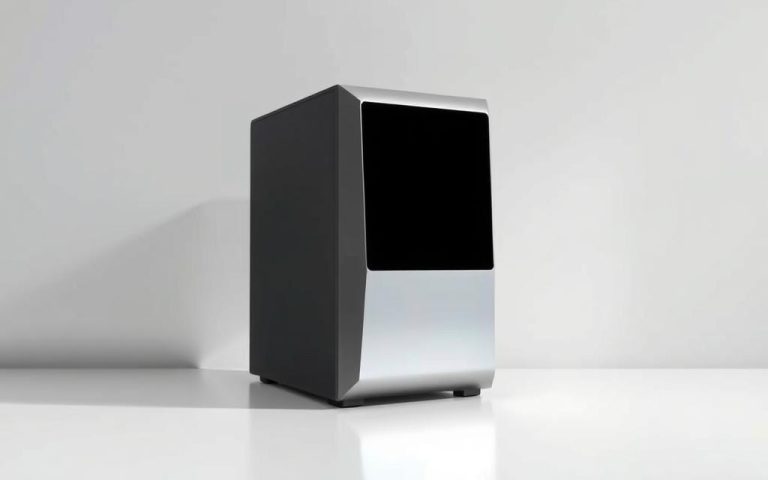What Is a Computer System? A Simple Definition for Beginners
A computer system is made up of hardware and software parts. These work together to process data. It’s a simple idea for beginners to get.
For those new to computers, it’s all about the right hardware and software. Together, they make a system that works well and efficiently.
Knowing about computer systems is key in today’s tech world. It helps us understand how devices like computers and phones work. This knowledge is exciting for beginners to learn.
A computer system is not just one device. It’s a network of parts that process information together. This understanding shows the beauty and complexity of these systems.
It doesn’t matter if you’re new or experienced. Knowing the basics of computer systems is important. A simple definition can help you understand more about them.
What Is a Computer System: A Simple Definition for Modern Times
In today’s world, knowing what a computer system is is key. It’s a group of parts that work together to handle, store, and share information. From Charles Babbage’s early models to today’s systems, the idea has grown a lot.
Computer systems have changed a lot over time. The 1970s and 1980s saw the start of personal computers. Laptops came later, and the cloud changed how we store and share data in the early 2000s.
The Basic Concept Explained
A computer system has several main parts: hardware, software, and networking. Together, they let users do many things, from simple tasks to complex projects.
How Computer Systems Differ from Single Computers
Computer systems are different because they can handle many users and tasks at once. Mainframes, for example, support thousands of users and many programs. They’re great for banking and telecom.
The Evolution of Computer Systems
Computer systems have gotten much better over time. Advances in tech like artificial intelligence and faster memory have made them quicker and more powerful. This change has greatly impacted how we live and work.
| Year | Development | Impact |
|---|---|---|
| 1970s | Introduction of personal computers | Democratization of computing |
| 1980s | Emergence of laptops | Increased mobility and portability |
| 2000s | Introduction of the modern cloud | Revolutionized software distribution and data storage |
The Building Blocks: Essential Hardware Components
A computer system has many hardware components that work together. These include input devices, processing units, storage devices, and output devices. The hardware components are the physical parts of the system, like the computer itself and its peripherals.
The key hardware components of a computer system are:
- Input devices: keyboards, mice, scanners
- Processing units: CPU, GPU
- Storage devices: hard drives, solid state drives, flash drives
- Output devices: monitors, printers, speakers
These components are the building blocks of a computer system. Knowing their functions and importance is key for building or upgrading a system. The computer system relies on these hardware components to do tasks, store data, and show output.
https://www.youtube.com/watch?v=4XwEsI_OYOM
In short, the hardware components of a computer system are its foundation. Choosing the right components is vital to meet the user’s needs. By understanding the different types of hardware components and their roles, users can make better choices when building or upgrading their computer system.
The Brain of the System: Understanding the Central Processing Unit
The central processing unit, or CPU, is the brain of the system. It executes instructions and controls other computer parts. Its speed and efficiency greatly impact how well a computer works.
The CPU, or processor, follows instructions in computer programs. It sends messages to other computer parts. This is done through the CPU instruction cycle, which includes Fetch, Decode, and Execute stages. The CPU’s cache memory and registers help access data quickly, ensuring smooth operations.
Modern CPUs have some key features:
- High clock speeds, ranging from 1GHz to 5GHz
- Multiple cores, typically between two and eight, depending on the intended use case
- Advanced architectures, such as x86/x64, designed for desktop computers, laptops, and servers
A high-quality CPU can greatly improve how fast applications launch and how well you can multitask. As John von Neumann said, the CPU design is key to a computer’s performance. With ongoing CPU technology advancements, we can look forward to even faster and more efficient processors.
The central processing unit is a vital part of a computer system. Its role in executing instructions and controlling other components is essential. By understanding how the CPU works and its key features, we can appreciate the complexity and sophistication of modern computer systems.
| CPU Feature | Description |
|---|---|
| Clock Speed | Measures the number of instructions per second |
| Number of Cores | Affects multitasking capabilities and overall performance |
| Architecture | Refers to the design and organization of the CPU |
Memory and Storage: The System’s Information Vault
In a computer system, memory and storage are key. They help the system work well and efficiently. The information vault is where all data is kept. It’s important to know about the different types of memory and storage.
Volatile memory, like RAM, holds data temporarily. It’s lost when the system turns off. Non-volatile memory, such as ROM, keeps data even without power. This makes it great for long-term storage.
Volatile memory is fast and good for quick data access. Non-volatile memory is good for keeping data safe and uses less power. It’s used in things like USB drives and SSDs.
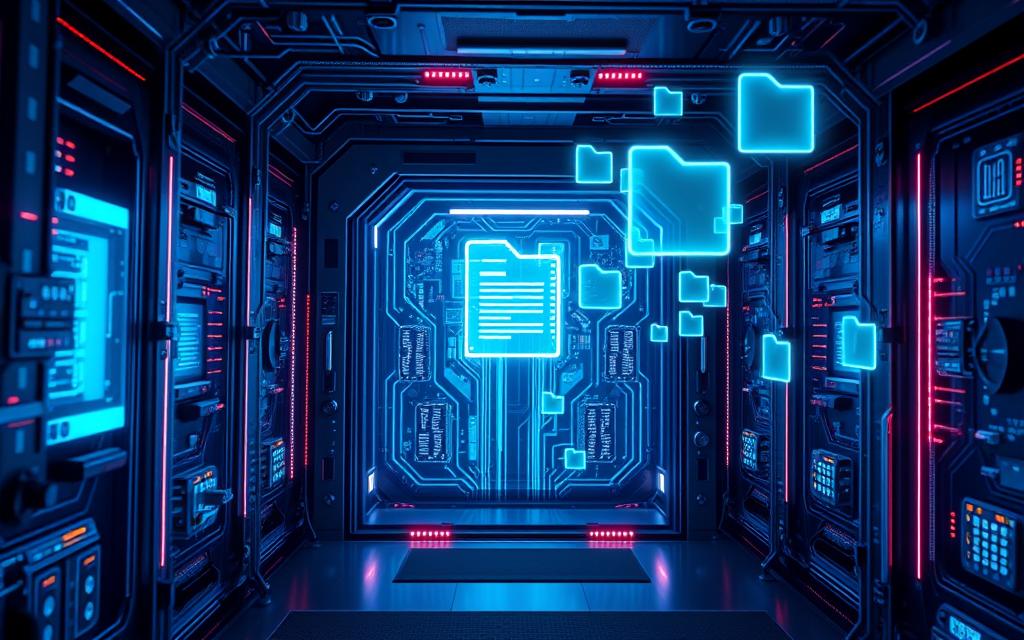
- RAM sizes can range from a few gigabytes to several terabytes
- ROM usually holds a small amount of data relative to RAM
- DRAM is commonly used in the main memory of computers due to its cost-effectiveness
- SRAM is faster and more reliable than DRAM, making it suitable for cache memory
In conclusion, knowing about memory and storage is key for a computer system. The information vault is where all data is stored. It’s important to pick the right memory and storage for the system’s needs.
Input and Output Devices: Bridging User and Machine
Computer systems need input devices to take in user data and output devices to show processed data. Input devices, like keyboards and mice, are more complex. This is because they have to turn user inputs into something the computer can understand.
It’s important to know the difference between input and output devices. Some devices, like touchscreen displays, can do both. The user interface is key for smooth interaction between users and computers. It makes sure data flows well through input and output devices.
Common Input Devices
- Keyboards
- Mice
- Joysticks
- Light pens
- Microphones
- Scanners
- Barcode readers
Essential Output Devices
- Monitors
- Printers
- Speakers
- Projectors
- Headphones
Input and output devices have different jobs. Input devices take in data, while output devices show it. A good user interface is key to making them work well together. This improves how well a computer system works.
In summary, input and output devices are vital for computers. They help create a smooth user interface. Understanding their roles helps us see how important a well-designed interface is for better system performance.
| Device Type | Function |
|---|---|
| Input Devices | Accept user data |
| Output Devices | Reflect or display processed data |
| User Interface | Facilitate interaction between users and computer systems |
System Software: The Digital Orchestra Conductor
The system software acts as a digital orchestra conductor. It manages the computer’s hardware and application software. This creates a harmonious and functional system. The operating system is key, acting as a bridge between hardware and software. It makes sure they communicate and share data smoothly.
Some key functions of system software include:
- Managing computer hardware resources
- Providing a platform for application software to run
- Controlling input and output operations
- Managing memory and storage
System software works like a skilled orchestra conductor. It makes sure all parts of the computer system work together. This creates a cohesive and efficient system. By understanding system software, users can see the beauty and complexity of their computers.
In conclusion, system software is the backbone of a computer system. It provides the necessary infrastructure for software and hardware to function. By recognizing its importance, users can optimize their systems. This ensures they run smoothly and efficiently, like a well-conducted orchestra.
| System Software Component | Function |
|---|---|
| Operating System | Manages hardware resources and provides a platform for application software |
| Device Drivers | Controls input and output operations |
| Utility Programs | Manages memory and storage |
Application Software: Tools for Every Task
Application software is key to making computers work better. It helps with tasks like being productive, having fun, and doing specific jobs. With so many options, users can pick what they need, making work easier. In fact, 86% of companies say the right software boosts their work.
Examples include Office, Excel, Word, and Firefox. These tools help with work, creativity, or talking to others. For example, Microsoft Word lets you write and edit documents. Excel helps with numbers and data.
- Productivity apps like word processors and spreadsheets
- Fun stuff like games and multimedia
- Special tools for jobs like accounting and engineering
This shows how wide-ranging software is. It meets different needs and likes.
| Application Software | Description |
|---|---|
| Microsoft Office | A suite of productivity applications, including Word, Excel, and PowerPoint |
| Adobe Photoshop | A graphics editing software for creative professionals |
| Skype | A video conferencing software for real-time communication |
In short, application software is vital for computers. It gives users the tools to do many tasks well. By choosing the right software, people and companies can work better, be more creative, and enjoy using computers more.
Networking: Connecting Computer Systems Together
Networking is key in computer systems, making it easy to share data and connection between systems. Computer networking lets us share resources, info, and services. The first network, ARPANET, started in the late 1960s. Now, networking is vital in today’s computer systems.
The speed of a network is called bandwidth. It shows how many bits can pass through a device in a second. There are many types of networks, like LANs, WANs, and SANs. Each has its own role based on size and location.
- Client-server architecture
- Peer-to-peer architecture
- Hybrid architecture
These setups help systems talk to each other. They make communication and data sharing smooth. As tech gets better, networking will play an even bigger role. It will open up new ways for systems to work together.
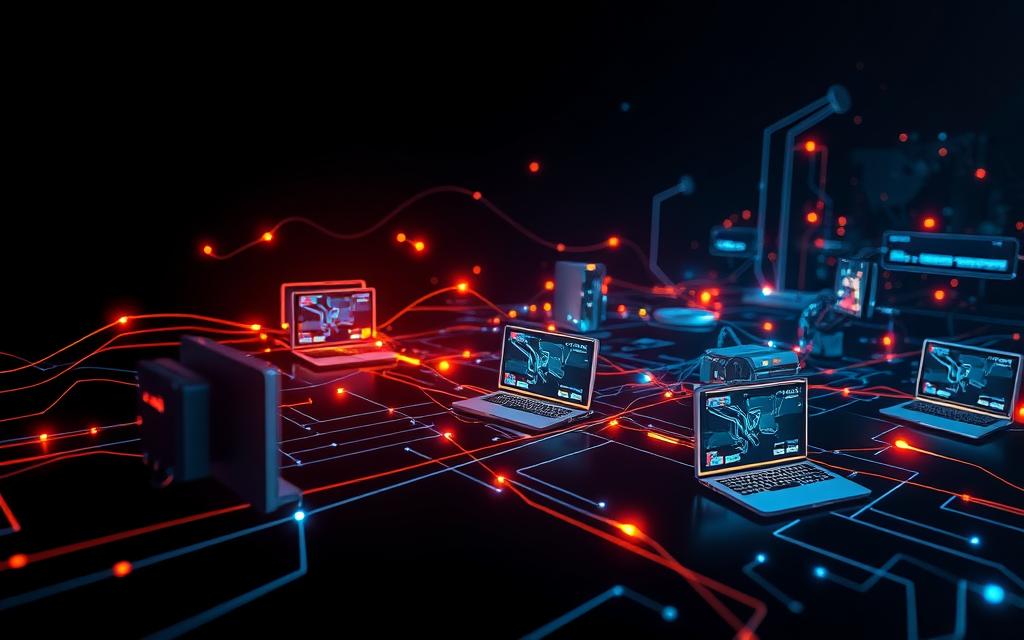
Companies gain a lot from networks. They get to share resources, keep data safe, and stay connected. Networks also offer storage, flexible ways to communicate, and fun options. As we need more networking and connection, it’s important to know how networks work and their uses in different areas.
Computer System Security: Protecting Your Digital World
As we explore the digital world, keeping our systems safe is key. We must guard against viruses, malware, and hacking. Protecting our digital world is vital to keep our information safe and prevent unauthorized access.
In today’s digital age, keeping our personal and financial info safe is a must. Threats like data theft, computer viruses, fraud, and privacy invasion are real. To fight these, we use passwords, track user activities, and keep data on separate devices.
Essential Protection Measures
Some important steps to take include:
- Assigning individual passwords to users
- Electronically tracking and recording user access and activities
- Storing data on separate devices inaccessible through the computer system
- Utilizing data encryption to ensure that information can only be deciphered by those holding a specific encryption key
By taking these steps, we can greatly improve our computer system security. New security methods are always being created to keep up with cybercriminals. As we use computers more in our lives, keeping them secure is essential to protect our digital world.
The Impact of Computer Systems on Modern Life
Computer systems have changed how we live, work, and interact. They’ve made a big difference in many areas of our lives. This includes personal use, business, and education.
Computer systems have made things more efficient. They automate tasks and help manage stock. In business, they help companies understand their customers and the market better. This leads to better customer service and easier online shopping.
Personal Computing Revolution
Computers have made it easier for people to get information and learn. They let us connect with others around the world. This has made us all more tech-savvy.
Business Transformation
Computers have changed how businesses work. They help companies be more efficient and adapt to new trends. They’re key for managing customer relationships and supply chains. This helps businesses grow and make smart choices.

Education Opportunities
Computers have changed education for the better. They give students access to lots of information and interactive tools. This makes learning more fun and effective. Teachers can also tailor lessons and track progress.
Common Computer System Problems and Solutions
Computer system problems can really get in the way of our daily lives. But, many of these issues have easy fixes. Issues like hardware failures, software problems, and network troubles are common. Finding the cause and fixing it is key.
Here are some common computer problems and how to solve them:
- Computer freezing: Rebooting usually fixes it 9 times out of 10.
- Slow performance: Defragmenting your C drive can speed things up.
- Blue Screen of Death (BSOD): It often means a hardware problem. Check your connections and update drivers.
- Power issues: Make sure all cables are securely connected.
Keeping your system updated can prevent many problems. Knowing how to fix common issues saves time and reduces stress. By using these fixes, you can keep your computer running smoothly.
Preventing problems is also important. Regular backups and virus scans help keep your data safe. These steps can protect your computer and keep it running well.
| Problem | Solution |
|---|---|
| Computer freezing | Rebooting the system |
| Slow performance | Defragmenting the C drive |
| Blue Screen of Death (BSOD) | Checking for loose connections or updating drivers |
| Power issues | Checking all cables and connections |
Conclusion: Embracing the Digital Future
Computer systems are key to the digital future. They have changed how we live, work, and communicate. These systems will keep shaping our world.
They are vital in many areas, from personal use to business operations. Understanding their power is essential. It helps us move forward, work better, and enjoy life more.
Many believe digital transformation is vital to stay ahead. The market for it is growing fast, with a 26.7% annual increase expected by 2030. This shows how important it is for everyone to use computer systems more.
The future is digital, and computer systems are at the heart of it. They open up new possibilities, making our lives easier and more enjoyable. Let’s embrace this future and see what’s possible with these amazing technologies.
FAQ
What is a computer system?
A computer system is made up of hardware, software, and extra equipment. They work together to process data efficiently.
How do computer systems differ from single computers?
Computer systems have many parts that work together. This includes input, output, storage, and a CPU. Single computers do tasks on their own without these parts.
What are the essential hardware components of a computer system?
Key parts are input devices like keyboards and mice. Output devices include monitors and printers. Storage devices are hard disk drives and solid-state drives. The CPU is the brain.
How does the CPU work in a computer system?
The CPU is the computer’s brain. It runs instructions, processes data, and controls the system. Its power and speed affect the system’s performance.
What is the role of memory and storage in a computer system?
Memory and storage are vital. They hold data and instructions. RAM helps the CPU quickly access information. Storage devices keep programs, files, and data long-term.
What are the common input and output devices used in computer systems?
Input devices are keyboards, mice, and touchscreens. They let users interact and input data. Output devices are monitors, printers, and speakers. They show information, print, and play audio.
What is the role of system software in a computer system?
System software is key. It manages hardware, provides a user interface, and ensures smooth system operation. This includes operating systems, drivers, and utility programs.
What types of application software are used in computer systems?
Application software does specific tasks. It includes productivity tools, entertainment software, and specialised programs. Examples are word processors, games, and engineering software.
How do computer systems communicate through networking?
Networking is vital for computer systems. It lets them share resources and communicate. Systems connect through LANs, WANs, or the internet for data exchange and collaboration.
How can computer systems be secured?
Protecting computer systems is critical. Threats like viruses and hacking must be guarded against. Firewalls, antivirus software, encryption, and data backup are essential for security.

